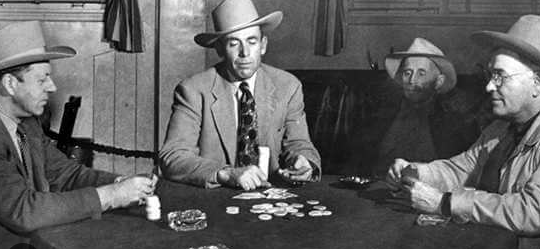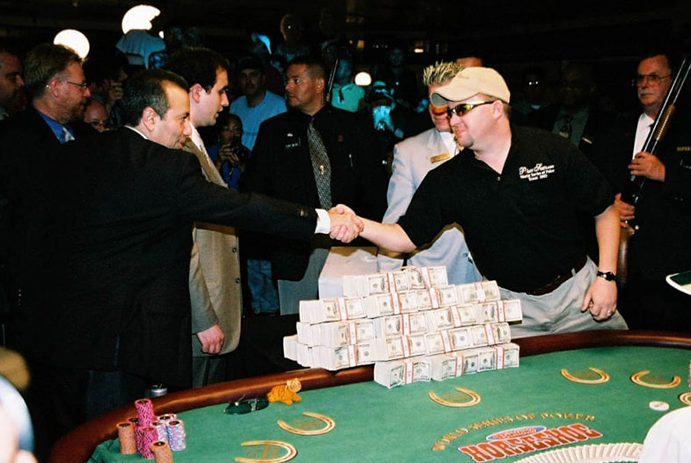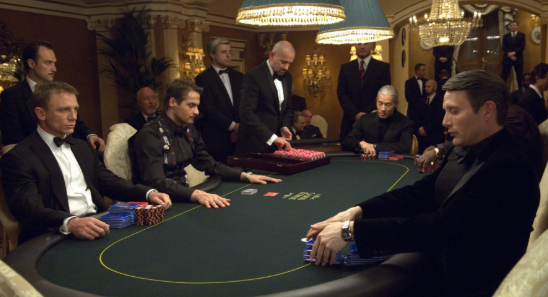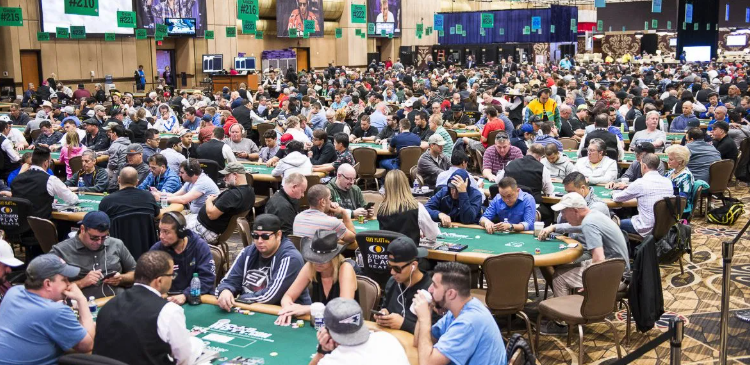The History of Texas Hold’em Poker: From the Dusty Trails of Robstown to Arenas Around the World
Texas Hold’em isn’t just a card game, as trivial as it may sound. It is a remarkable cultural phenomenon, a symbol of excitement, strategy, and human psychology, embodied in 52 cards and a few chips. Today, it is familiar to anyone who has ever watched a broadcast from Las Vegas or tried playing online poker. But the path of this game to worldwide fame was long, winding, and uniquely romantic. To understand how Hold’em evolved from a local pastime of Texas cowboys into one of the most important and celebrated forms of modern poker, it is worth exploring its history—from the 19th century to the present day.
Poker: The Birth of a Legend
Poker is significantly older than Hold’em by a full century. Its roots trace back to the early 19th century, when a game similar to the French “poque” and the English “brag” spread across the American South. These games combined three key elements that would later form the foundation of Hold’em: betting, card combinations, and the ability to bluff.

During the era of Mississippi riverboats, poker became a symbol of the American West. It was played in saloons, stagecoach stations, and even army camps. The game gradually evolved: new variations, new rules, and new combinations emerged. By the end of the 19th century, several stable forms of poker already existed—for example, five-card stud and draw poker. It was from these simple variations that Texas Hold’em would eventually emerge.
Texas: The Cradle of a New Game
Poker historians around the world agree that the birthplace of Texas Hold’em was the small town of Robstown in southern Texas. According to legend, in the early 20th century, cowboys, farmers, and travelers gathered there to spend their evenings at the card table. Standard forms of poker had bored them, and someone suggested changing the rules: instead of dealing each player five cards, each would hold only two cards, with the remaining five dealt face-up on the table.
This introduced the concept of community cards (three flop cards, one turn card, and one river card) lying in the center of the table and available to all players. This was a game-changing innovation that fundamentally altered the essence of poker. Now, players had to not only calculate their own odds but also analyze potential hands of their opponents. It opened room for psychology, observing reactions and facial expressions, bluffing, and mathematical calculations.
At that time, Hold’em was more of a pastime for a very small circle. The rules were passed down orally, and each group played with its own slight variations. In small Texas towns, the game gained popularity, but it remained a regional phenomenon. It was known in Robstown, Dallas, Corpus Christi, and Austin, but nowhere else.
Icons of the Early Hold’em Era
By the mid-20th century, Texas Hold’em began to accumulate legends. Among those who helped spread the game beyond their state, the most frequently mentioned are Doyle Brunson, Crandall Addington, and Amarillo Slim—the names forever etched in poker history.
These players traveled the country, participating in underground games, often illegal, in the back rooms of bars, motels, and cabarets. They brought not only excitement but also a new format of the game. Hold’em became a kind of entry into the “elite” of the card world. Those who knew the rules were considered professionals.
Doyle Brunson, later called the “godfather of poker,” became particularly famous. He not only popularized Hold’em but also wrote one of the most influential strategy books, Super System, which later became the bible for players.
Some famous quotes from Doyle Brunson:

- “The key to no-limit Hold’em is to get the guy to commit all his chips.”
- “Poker is a people game. It’s not the hands I hold, but the people I play with.”
- “If you can’t spot the loser at the table in the first 30 minutes, you’re the loser.”
- “Poker is war. People pretend it’s a game.”
- “When in doubt, go all in. Force your opponent to make a decision.”
— Doyle Brunson
A New Era Begins in Las Vegas
Crucial events unfolded in the 1960s when several Texas players decided to bring their favorite game to Las Vegas—the city where modern gambling culture was forming. Among them were Amarillo Slim Preston, a charismatic and flamboyant player, Doyle Brunson, and Benny Binion, owner of the famous Horseshoe Casino.
Binion immediately recognized the enormous potential of Hold’em. Unlike other forms of poker, which relied heavily on luck, Texas Hold’em required strategy, keen psychological insight, and the ability to read opponents’ intentions. This made the game spectacular—and therefore profitable for casinos.
It was at Binion’s casino in 1970 that the first World Series of Poker (WSOP) took place—a tournament that became a turning point in poker history. Only seven players participated in the first series, but it was then that Texas Hold’em became an official tournament game. Since then, the WSOP has been held annually, and the main Hold’em tournament has become the most prestigious event in the poker world, attracting players from across the globe.
The Golden Era of the 1970s–1980s: From Privilege to Global Popularity
The 1970s and 1980s can be called the era of professional poker’s emergence. Hold’em ceased to be a cowboy pastime and became a full-fledged sport—intellectually demanding and economically rewarding.

Players began seeing themselves not just as thrill-seekers but as masters of strategy. The first books emerged, describing the mathematical foundations of the game, psychology of competition, and principles of positional advantage. Doyle Brunson, Mike Caro, and David Sklansky each contributed to the theoretical foundations of Hold’em.
During this period, the game spread beyond Las Vegas. Poker rooms appeared in Atlantic City, Reno, Tulsa, and other cities. Hold’em entered cinema, literature, and popular culture. Card scenes became symbols of risk, courage, and intellect. Even those who never held a deck knew the expression “all-in.”
Television and the Wave of Popularity
In the late 20th century, Texas Hold’em received a new boost from television. With the rise of satellite channels and cable broadcasts, WSOP tournaments began reaching millions of viewers. At first, watching poker was not that engaging because spectators could not see players’ cards. Everything changed in the late 1990s with the introduction of the hole-card camera—this drew many viewers and increased the sport’s excitement.
This simple but brilliant innovation transformed the perception of poker. Now spectators could follow each hand, see hidden cards, and understand strategies. Hold’em became a true TV show, combining drama, intellect, and luck. It was also fascinating to hear conversations at the table and commentary on the hands. Viewers became more knowledgeable, and the game grew even more popular and interesting.
The Online Revolution: Hold’em Goes Digital
The real explosion in popularity came in the early 2000s. In 1998, the first online poker room appeared, soon followed by dozens of similar sites. Now, to play Hold’em, one didn’t need to go to a casino—just a computer and internet connection sufficed.
2003 was a turning point. Chris Moneymaker, an ordinary accountant from Tennessee, won an online satellite for $39 and earned a WSOP ticket. No one expected a newcomer to win the main tournament—but Moneymaker defied expectations, defeating professionals and taking home the million-dollar prize.

This became known as the “Moneymaker Effect.” Millions around the world believed that anyone could win at poker. Online platforms experienced unprecedented growth, and Texas Hold’em became a symbol of the new digital era of gambling and competitive gaming.
Hold’em in the 21st Century: Strategy, Technology, and Globalization
In the 21st century, Texas Hold’em has firmly established itself as the main form of poker worldwide. It has become a sport, a subject of study for mathematicians and psychologists, and even a testing ground for artificial intelligence.
The emergence of HUD tools, statistics, training programs, and solvers has significantly changed strategic approaches. Where players once relied on intuition, decisions are now based on probabilities, game theory, and current trends. Modern professionals combine psychology, mathematics, and machine learning to find optimal lines of play.
At the same time, Hold’em has become part of popular culture. It appears in films (Casino Royale, Rounders), video games, and even university courses on decision-making.

Poker tournaments have turned into media spectacles with multi-million-dollar prize pools, and top players have become global celebrities. Names like Daniel Negreanu, Phil Ivey, Phil Hellmuth, Vanessa Selbst, Fedor Holz, and Viktor Blom are known far beyond the poker community.
Artificial Intelligence and a New Era of Analysis
The past decade brought a technological revolution to poker. Computers learned to play Hold’em better than humans. In 2017, the AI “Libratus,” developed at Carnegie Mellon University, defeated the best professional players in no-limit Hold’em.
This event was a turning point, showing that even such a complex psychological game could be mastered by a machine. Yet it did not kill interest in poker. On the contrary, many players began using computer analysis to improve their game and adapt to changing poker realities. A new profession emerged—poker analyst and coach, combining mathematics, programming, and intuition.
The Social and Cultural Side of Hold’em
Interestingly, Hold’em is not just gambling—it is a model of human relationships. Risk meets calculation, logic meets emotion, belief meets doubt. Each participant must make decisions with incomplete information—just like in life.
It is no coincidence that many successful entrepreneurs and investors say poker taught them risk management. Hold’em develops composure, observation, and the ability to accept defeat.
At the same time, the game remains accessible to all. At the poker table, a billionaire and a student can meet, and their chances depend not on social status but on skill.
Challenges and Limitations
Difficulties exist. In some countries, online poker is banned, and players face legal restrictions. Governments in these countries do not recognize poker as a sport, equating it with gambling. Hold’em exists on the border between luck and skill: for some it’s a game of chance, for others an intellectual competition.
Nevertheless, even strict laws have not stopped the spread of Hold’em. Regional versions, home clubs, and mobile apps appeared. With the rise of cryptocurrencies and blockchain, decentralized poker platforms have emerged—convenient platforms where code, not casinos, governs the game.
Modern Hold’em: From Clubs to Streams
Today, Texas Hold’em exists in many formats: offline tournaments, TV shows, online rooms, and even poker streams on Twitch and YouTube. A new generation of players grew up not in casinos but in front of screens, learning strategies from video tutorials and training reactions on simulators.
Professionals now share experiences in real time, commenting on their decisions and demonstrating that poker is not gambling but an art of thinking.
Meanwhile, major tournaments continue: WSOP, EPT, WPT. Prize pools are in the millions, and the world championship in Hold’em has become a dream for thousands.
A Game That Reflects an Era
The history of Texas Hold’em is the story of the human spirit, the drive for risk, and the search for the best solution under uncertainty. From humble games in dusty Robstown bars to global tournaments and online arenas, Hold’em has traveled a century-long path while maintaining its core virtue: it is always a challenge.

This game is not about luck. It is about character. About how a person behaves when stakes are high and information is limited. About patience, observation, decision-making, and going all-in when the moment demands.
Texas Hold’em is not just poker. It is a mirror of our era, where intelligence matters more than physical strength, and cold calculation is the best ally of ambition.
And as long as there are people willing to risk for their hand, this game will continue its story—wherever the cards are dealt.